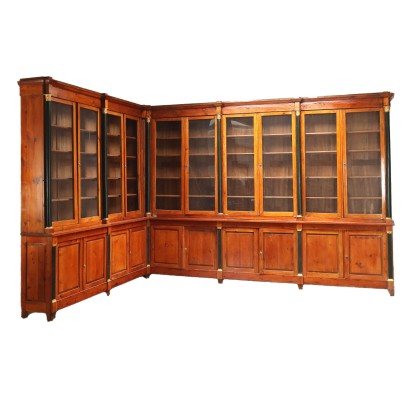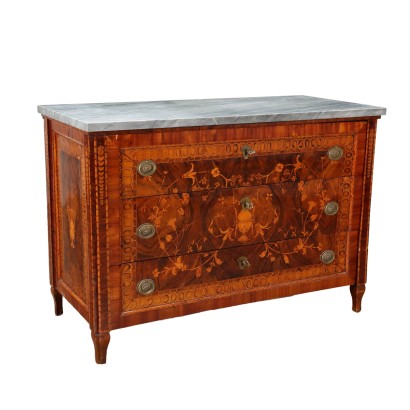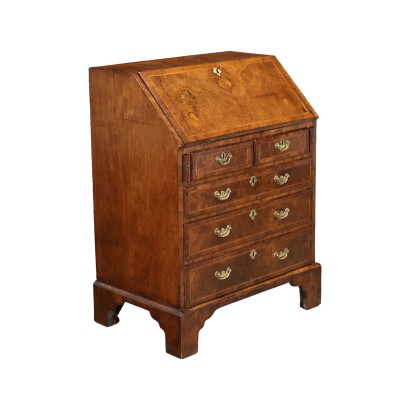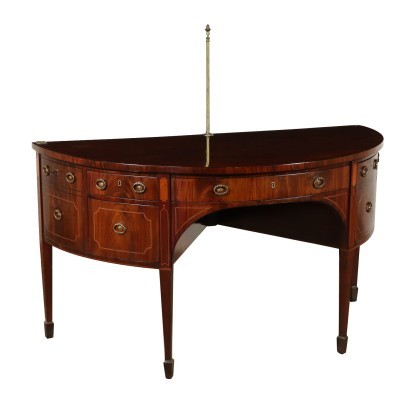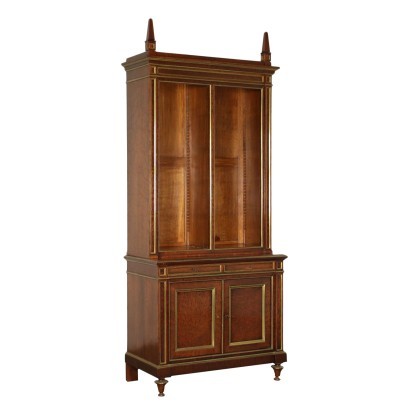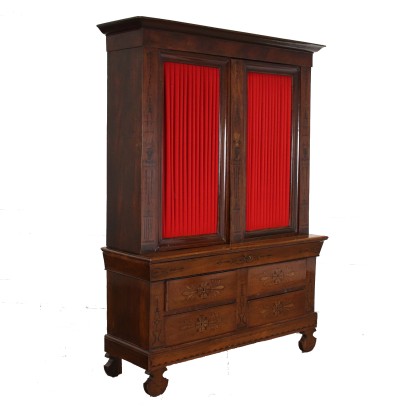Empire Style Bookcase Pine Italy XIX Century - Tuscany Late 19th century
Features
Tuscany Late 19th century
Style: Empire Revival
Age: 19th Century / 1801 - 1900
Origin: Toscana, Italy
Main essence: Silver Fir , Pine
Material: Gilded Wood , Carved Wood , Lacquered Wood , Glass
Description
Empire style bookcase in pine and fir, Tuscany, late 19th century. Stand with 5 pairs of glass doors, equipped with lacquered column uprights with carved and gilded capitals; body with 5 pairs of paneled doors framed by pilasters in lacquered and gilded wood. Locks replaced. To be restored.
Product Condition:
Product that due to age and wear requires restoration and resumption of polishing.
Dimensions (cm):
Height: 287
Depth: 48
Maximum size (cm):
Width: 428
Depth: 312
Additional Information
Style: Empire Revival
Ripresa stilistica, del 900, delle forme proprie dello stile Impero (1804-1815)
Age: 19th Century / 1801 - 1900
19th Century / 1801 - 1900 Main essence:
Silver Fir
Soft coniferous wood, used for rustic furniture or to build the chest, that is the structure, of furniture then veneered in more precious woods. It has been used since ancient times, its most valuable use is, in the Spruce variant, in the inlays of French antique furniture of the '700 . The spruce, more typical of northern Europe, in Italy grows mainly in the Eastern Alps at altitudes above 1300 m. The noblest use of this essence was in the construction of violins, guitars and cellos: Stradivari himself produced his famous violins with this wood.
Pine
The term pine wood indicates the essence from various species of conifers, especially Scots pine, maritime pine and pinea pine. Used since ancient times for the most common furniture, with the advent of the veneer technique, in the 1600s, it was widely used in the construction of the structure of even luxury furniture, which were then covered, decorated (in Venice) or gilded ( in England). It has a color that varies from white to yellow with reddish hues and can be both very soft and very hard. Material:
Gilded Wood
Carved Wood
Lacquered Wood
Glass
Other customers have searched:



